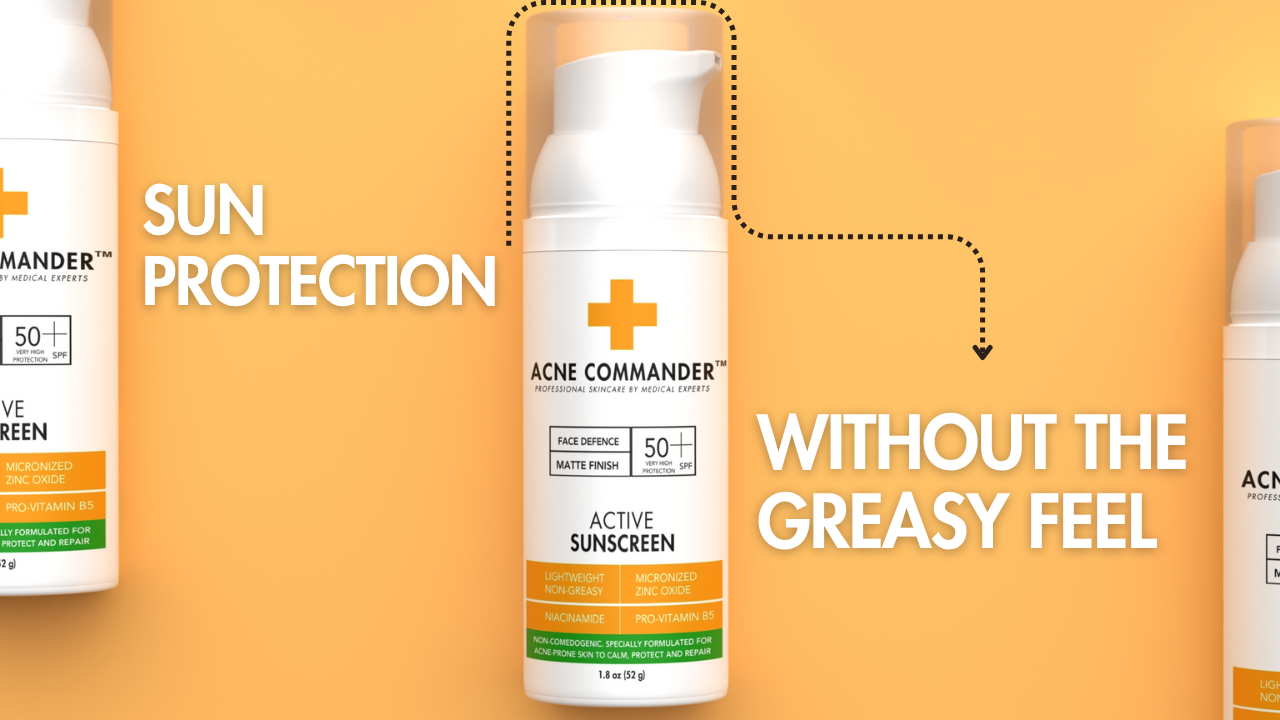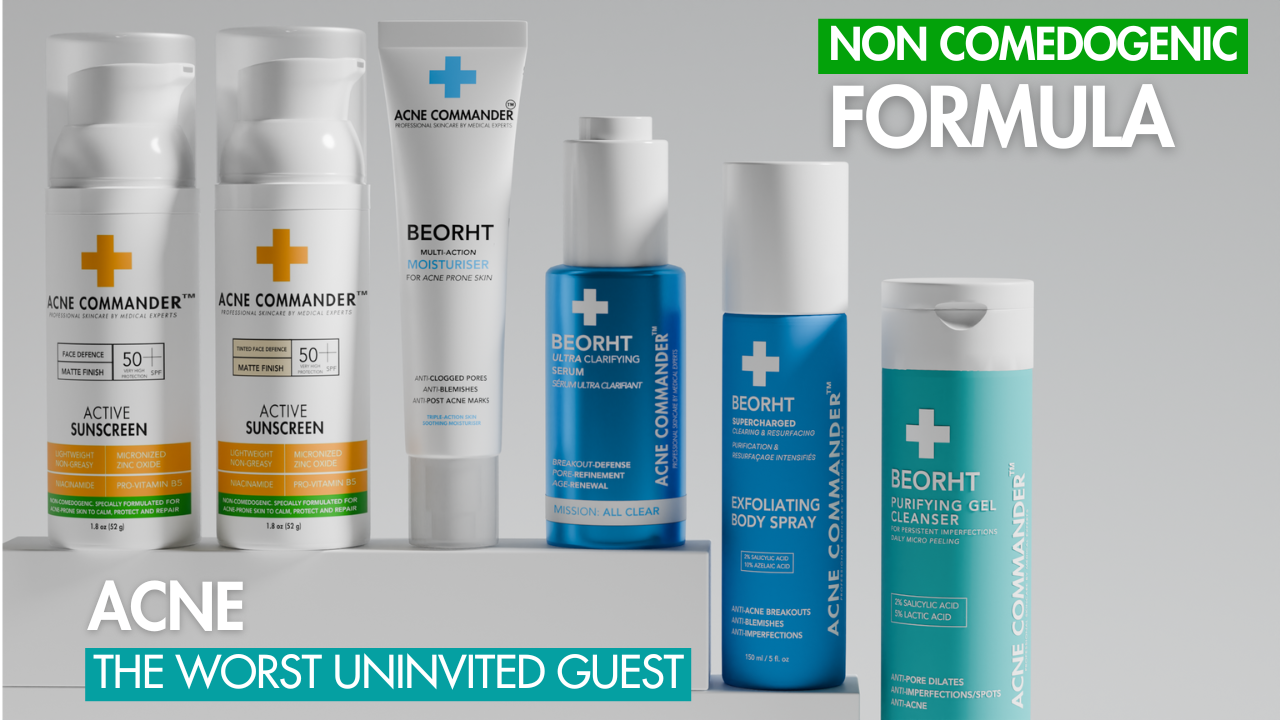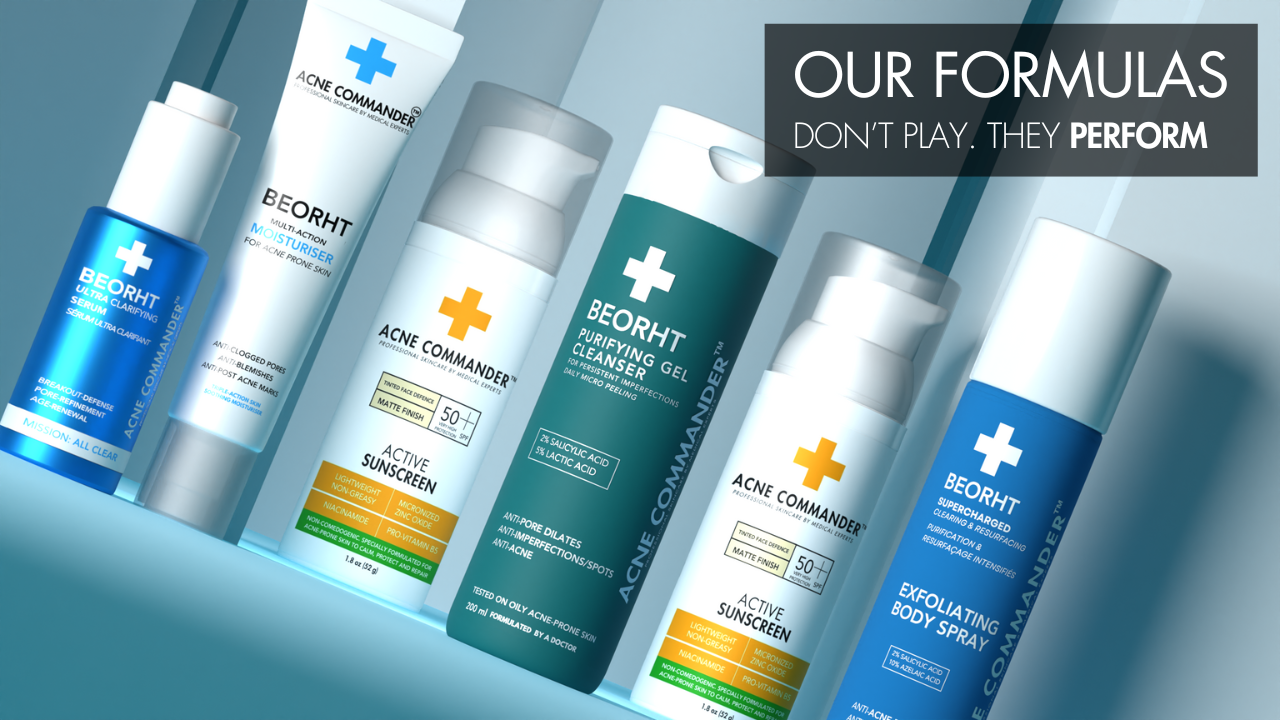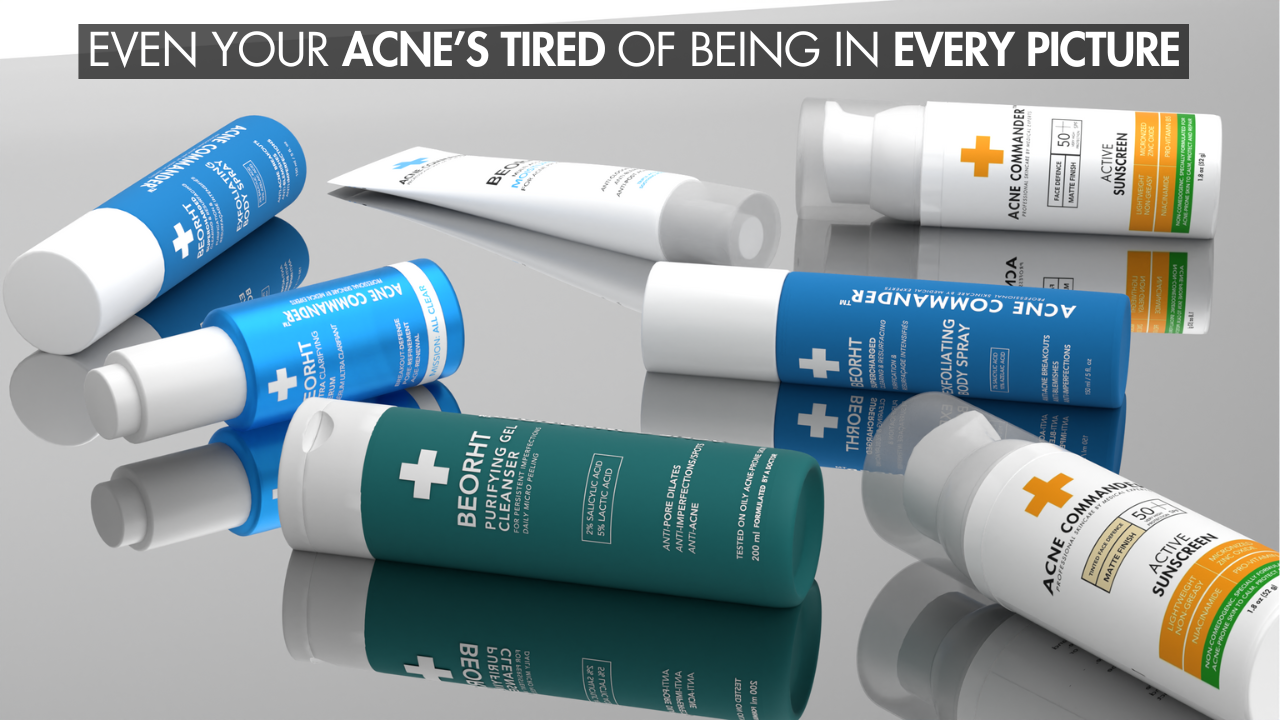Dealing with acne can often feel like an uphill battle. Breakouts, oily skin, clogged pores, and redness can be frustrating and persistent. However, one of the most important yet overlooked aspects of acne treatment is choosing the right cleanser and using it correctly.
Among the most effective options available for acne-prone skin is an acne foaming cream cleanser. These cleansers are specifically formulated to remove impurities, target acne-causing bacteria, and balance the skin without stripping its natural barrier. One such trusted product is the Beorht Purifying Gel Cleanser by Acne Commander, a gentle yet potent foaming cream cleanser designed to treat acne and support healthy skin.
But how do you use an acne foaming cream cleanser effectively? And how does it actually work to fight acne? This guide will break it all down, covering what these cleansers are, how they benefit acne-prone skin, how to use them properly, and what to look for when choosing the best product for your skin.
What Is an Acne Foaming Cream Cleanser?
An acne foaming cream cleanser is a skincare product that combines the gentleness of a cream cleanser with the deep-cleansing action of a foaming wash. These cleansers typically contain active ingredients like salicylic acid, benzoyl peroxide, or tea tree oil, known for their effectiveness in treating acne.
When applied, the cleanser forms a light lather that helps to lift dirt, excess oil, dead skin cells, makeup, and bacteria from the skin’s surface and within the pores. Unlike gel-based or harsh scrubs, a foaming cream cleanser is formulated to cleanse deeply without irritating or drying the skin.
The Beorht Purifying Gel Cleanser by Acne Commander, for instance, is formulated to deliver the benefits of foam cleansing while using non-comedogenic ingredients that help restore skin balance. Its unique formula ensures your skin gets a thorough cleanse while staying hydrated and calm.
Why Foaming Cream Cleansers Are Ideal for Acne-Prone Skin
1. Deep Cleansing Without Dryness
Acne-prone skin often accumulates excess oil, environmental pollutants, and product residue that clog pores and trigger breakouts. A foaming cream cleanser works to dissolve and remove these impurities. What sets it apart is its ability to clean deeply without over-drying the skin. Dryness can cause irritation and may lead to more sebum production, creating a vicious cycle.
A well-balanced formula like Beorht Purifying Gel Cleanser by Acne Commander ensures that while it foams to clear debris, it maintains the skin’s natural moisture barrier, which is essential for acne recovery.
2. Reduces Oil Without Over-Stripping
While oily skin contributes to acne, removing all oil from your face is not the answer. Your skin needs natural oils for protection and elasticity. Acne foaming cream cleansers work to remove excess oil, not all of it, helping to normalize sebum production and prevent clogged pores without damaging your skin’s natural defenses.
3. Targets Acne-Causing Bacteria
Foaming cream cleansers often include antibacterial or exfoliating ingredients like salicylic acid or benzoyl peroxide. These work to reduce the population of acne-causing bacteria (C. acnes) on the skin. Benzoyl peroxide, in particular, has been shown to kill bacteria directly, while salicylic acid exfoliates inside pores.
4. Prevents Future Breakouts
Clogged pores are the beginning of most acne formations. The foaming action of these cleansers helps to keep pores clear by removing daily buildup. Consistent use helps reduce the chance of new blemishes forming.
5. Calms Redness and Inflammation
Quality acne foaming cream cleansers often include calming agents such as chamomile, aloe vera, or green tea extract. These ingredients help to reduce irritation and redness, making the cleanser suitable even for sensitive, inflamed acne-prone skin.
Explore detailed information for Acne Commander's Beorht Purifying Gel Cleanser. Click Here
How to Use an Acne Foaming Cream Cleanser: A Step-by-Step Routine
To get the maximum benefit from your cleanser, technique and consistency matter. Follow this detailed guide:
Step 1: Wash Your Hands First
Always start with clean hands. Wash them with soap and warm water to remove dirt, bacteria, and oils. You don’t want to transfer germs from your hands to your face.
Step 2: Wet Your Face with Lukewarm Water
Use lukewarm, not hot or cold, water to wet your face. Lukewarm water helps open up your pores slightly, allowing the cleanser to penetrate and work more effectively. Hot water can strip your skin and worsen inflammation, while cold water doesn’t dissolve oil as effectively.
Step 3: Apply the Cleanser
Dispense about a dime-sized amount of your foaming cream cleanser (or the amount recommended on the packaging). Gently massage it into your damp skin using circular motions. Be thorough but gentle, concentrate on acne-prone areas like the forehead, cheeks, chin, and jawline.
If you're using Beorht Purifying Gel Cleanser by Acne Commander, you'll notice it turns into a light foam that spreads easily and feels soothing to the skin.
Step 4: Cleanse for 20–30 Seconds
Massage the product into your skin for at least 20–30 seconds. This gives the active ingredients time to work and ensures dirt and oil are broken down effectively. Avoid scrubbing too hard, this can cause micro-tears in the skin and increase inflammation.
Step 5: Rinse Thoroughly
Rinse off the cleanser with lukewarm water until no residue remains. Leftover cleanser can clog pores or irritate the skin. Be patient and ensure your skin feels clean but not tight.
Step 6: Pat Dry
Use a soft, clean towel to gently pat your face dry. Don’t rub or tug at the skin. Leaving the skin slightly damp can also help with better absorption of follow-up products like toners, serums, or moisturizers.
Step 7: Moisturize
Moisturizing is essential after cleansing, even for oily and acne-prone skin. Choose a lightweight, non-comedogenic moisturizer that helps restore hydration without clogging pores. This step helps maintain a balanced barrier and prevents overproduction of oil.
When and How Often to Use It
The right frequency depends on your skin type and the product’s formulation.
Oily or Combination Skin
Cleansing twice a day, morning and evening, is ideal. A foaming cream cleanser helps reduce shine during the day and clears sweat and buildup overnight.
Dry or Sensitive Skin
Start with once a day (preferably in the evening) to prevent over-drying. Always follow up with a good moisturizer. Look for a cleanser with hydrating and soothing properties like Beorht Purifying Gel Cleanser by Acne Commander.
During Acne Flare-ups
Stick to your regular schedule and avoid over-cleansing. If your skin is inflamed, gentler is better. Let the active ingredients work consistently over time.
Tips for Best Results
-
Be Consistent
Use your cleanser every day as part of your routine. Cleansers are most effective when used consistently over weeks, not just during flare-ups.
-
Double Cleanse (If Needed)
If you wear heavy makeup or sunscreen, start with an oil cleanser like Beorht Purifying Gel Cleanser by Acne Commander as your first step. Follow with your foaming cream cleanser to thoroughly clean the skin.
-
Avoid Over-Exfoliating
Don’t use physical scrubs or strong chemical exfoliants on the same day you use an acne cleanser. This can increase irritation and worsen acne.
-
Store It Properly
Keep your cleanser in a cool, dry place. Avoid contamination by sealing it properly and using clean hands or tools when dispensing the product.
What to Look for in an Acne Foaming Cream Cleanser
1. Active Acne-Fighting Ingredients
-
Salicylic Acid: A beta hydroxy acid that exfoliates deep within pores. Great for blackheads and whiteheads.
-
Benzoyl Peroxide: Antibacterial and anti-inflammatory. Ideal for inflamed pimples and cysts.
- Tea Tree Oil: Natural antiseptic and anti-inflammatory.
2. Hydrating and Soothing Ingredients
Look for components like glycerin, hyaluronic acid, aloe vera, or chamomile to counterbalance the drying effects of acne treatments.
3. Non-Comedogenic Formula
Always choose products labeled "non-comedogenic," which means they’re formulated not to block pores.
4. Fragrance-Free or Low Fragrance
Fragrances can irritate sensitive skin, especially when combined with active acne treatments. Go for fragrance-free or dermatologist-tested options.
The Beorht Purifying Gel Cleanser by Acne Commander checks all these boxes, combining gentle foaming action with effective acne treatment ingredients, all while being safe for sensitive skin.
Frequently Asked Questions (FAQs)
Q1: Can an acne foaming cream cleanser help with cystic acne?
Yes, it can help reduce the frequency of cystic breakouts by keeping pores clear and reducing bacteria. However, cystic acne often requires additional treatment from a dermatologist.
Q2: Can I use it with other acne treatments like retinoids or serums?
Absolutely, but you should monitor your skin’s tolerance. If dryness or irritation occurs, reduce the frequency or consult a skincare professional.
Q3: Should I use a toner afterward?
Toners aren’t mandatory, but if you choose to use one, pick something gentle and alcohol-free to avoid irritation.
Q4: What if my skin feels tight after cleansing?
A tight feeling usually indicates your cleanser is too drying or you're not moisturizing enough afterward. Consider switching to a more hydrating formula like Beorht Purifying Gel Cleanser by Acne Commander.
Q5: How long will it take to see results?
With consistent use, you may begin to see visible improvements within 2 to 4 weeks. Severe acne may take longer and require combination treatments.
Q6: Can I use an acne foaming cream cleanser if I have sensitive skin?
Yes, as long as you choose a gentle, non-irritating product like Beorht Purifying Gel Cleanser by Acne Commander. Avoid harsh ingredients that can inflame sensitive skin.
Q7: How often should I use an acne foaming cream cleanser?
For oily or combination skin, use it twice a day, once in the morning and once in the evening. For dry or sensitive skin, start with once a day, preferably in the evening.
Q8: Can an acne foaming cream cleanser replace my regular facial cleanser?
Yes, an acne foaming cream cleanser can be used as your primary facial cleanser, particularly if it targets acne and works gently to balance the skin.
Q9: Is an acne foaming cream cleanser safe for all skin types?
Yes, but it's important to choose the right one. Beorht Purifying Gel Cleanser by Acne Commander is safe for most skin types, including acne-prone, sensitive, and combination skin.
Q10: Can I use a foaming cream cleanser if I wear makeup?
Yes, oil-based cleansers are ideal for makeup removal, but for maximum benefit, follow with a foaming cream cleanser to remove any remaining residue.
Conclusion
An acne foaming cream cleanser can be one of the most powerful and foundational steps in an acne-fighting skincare routine. By cleansing deeply without damaging the skin barrier, reducing oil buildup, and helping prevent clogged pores, it creates the right environment for healing and balance.
When used correctly and consistently, a cleanser like Beorht Purifying Gel Cleanser by Acne Commander can help transform your skin. Designed to cleanse without over-drying, soothe without irritating, and treat acne gently yet effectively, it’s a reliable option for daily acne care.
Call to Action
Looking for a solution that works? Start your skincare journey today with Beorht Purifying Gel Cleanser by Acne Commander, a foaming cream cleanser developed for acne-prone skin that delivers powerful cleansing, hydration, and clarity in one step.






